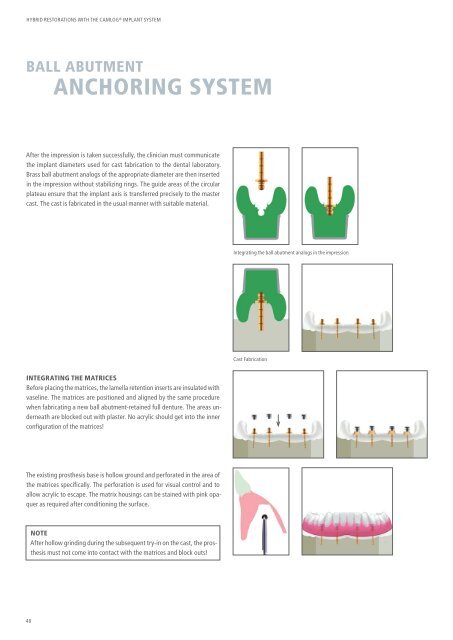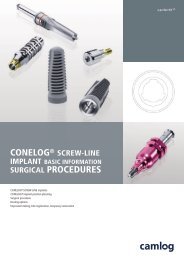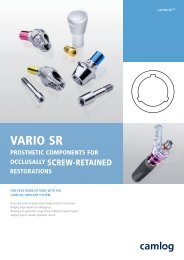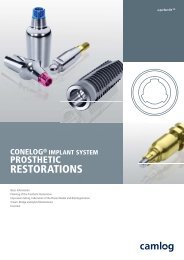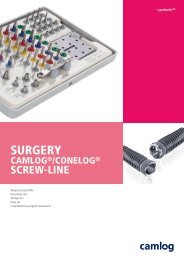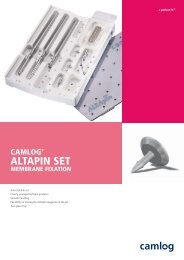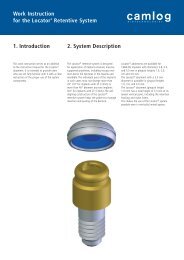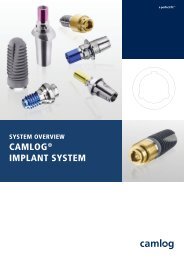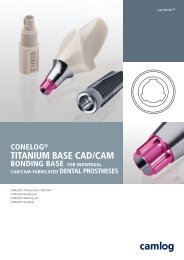Hybrid Restorations with the CAMLOG Implant System (PDF
Hybrid Restorations with the CAMLOG Implant System (PDF
Hybrid Restorations with the CAMLOG Implant System (PDF
Create successful ePaper yourself
Turn your PDF publications into a flip-book with our unique Google optimized e-Paper software.
HYBRID RESTORATIONS WITH THE <strong>CAMLOG</strong> ® IMPLANT SYSTEM<br />
BALL ABUTMENT<br />
ANCHORING SYSTEM<br />
After <strong>the</strong> impression is taken successfully, <strong>the</strong> clinician must communicate<br />
<strong>the</strong> implant diameters used for cast fabrication to <strong>the</strong> dental laboratory.<br />
Brass ball abutment analogs of <strong>the</strong> appropriate diameter are <strong>the</strong>n inserted<br />
in <strong>the</strong> impression <strong>with</strong>out stabilizing rings. The guide areas of <strong>the</strong> circular<br />
plateau ensure that <strong>the</strong> implant axis is transferred precisely to <strong>the</strong> master<br />
cast. The cast is fabricated in <strong>the</strong> usual manner <strong>with</strong> suitable material.<br />
INTEGRATING THE MATRICES<br />
Before placing <strong>the</strong> matrices, <strong>the</strong> lamella retention inserts are insulated <strong>with</strong><br />
vaseline. The matrices are positioned and aligned by <strong>the</strong> same procedure<br />
when fabricating a new ball abutment-retained full denture. The areas underneath<br />
are blocked out <strong>with</strong> plaster. No acrylic should get into <strong>the</strong> inner<br />
configuration of <strong>the</strong> matrices!<br />
The existing pros<strong>the</strong>sis base is hollow ground and perforated in <strong>the</strong> area of<br />
<strong>the</strong> matrices specifically. The perforation is used for visual control and to<br />
allow acrylic to escape. The matrix housings can be stained <strong>with</strong> pink opaquer<br />
as required after conditioning <strong>the</strong> surface.<br />
48<br />
NOTE<br />
After hollow grinding during <strong>the</strong> subsequent try-in on <strong>the</strong> cast, <strong>the</strong> pros<strong>the</strong>sis<br />
must not come into contact <strong>with</strong> <strong>the</strong> matrices and block outs!<br />
Integrating <strong>the</strong> ball abutment analogs in <strong>the</strong> impression<br />
Cast Fabrication


